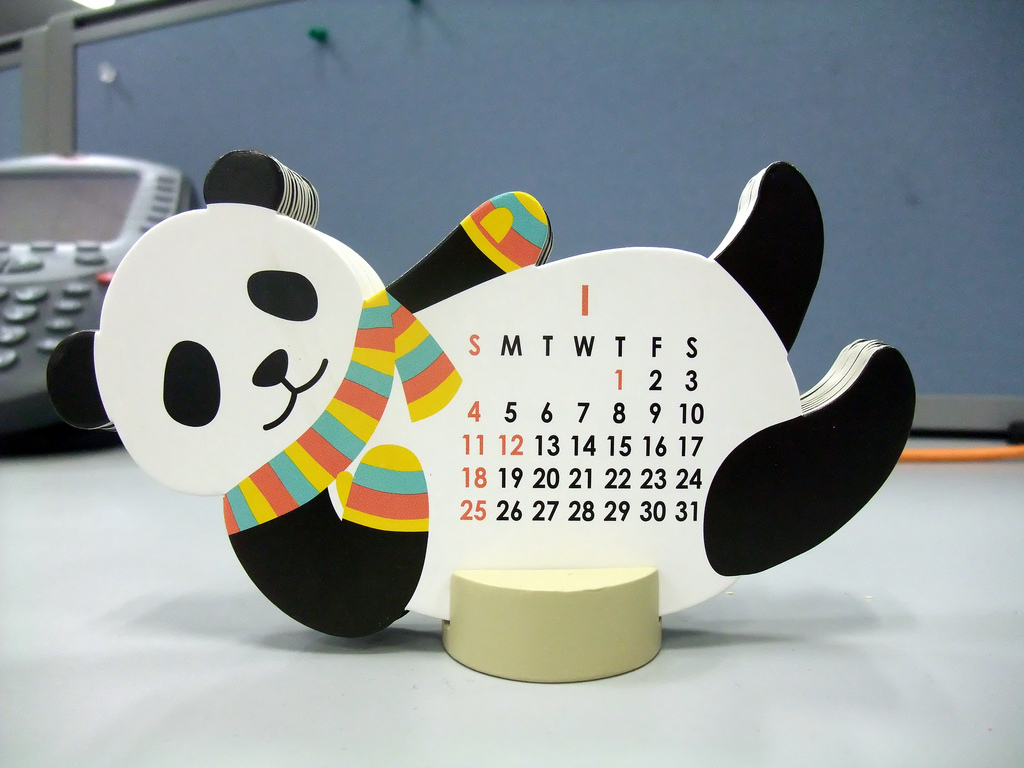In the past, we’ve discussed some of the content weapons every travel brand should have in their arsenal, from a company blog to the all-important style guide. And this time around, we’re focusing on another must-have: the editorial calendar. As the old saying goes, ‘Fail to prepare, prepare to fail’. It is advice we should all heed. Try to tackle a marathon without any training or embark on a desert trek without water and the outcome won’t be pretty.
If you’re looking to make a significant impact with your travel content, first you must make a travel content plan…

What is an editorial calendar?
It is what is says on the tin — a calendar that charts your editorial course. Essentially, it’s a management tool to help you plan ahead and keep on top of publishing schedules and deadlines.
Editorial calendars are hardly a revolutionary idea; they have been in use since newspapers have been in print. But in this digital age of ever-increasing publishing mediums and platforms, editorial calendars are no longer the sole preserve of newspapers and magazines; these days, everyone is a publisher. If your travel brand has a blog or even a social media account, then you could probably do with an editorial calendar to ensure your content is both varied and on schedule.
Editorial calendars come in many different shapes and sizes, from complex multi-tab spreadsheets to simple text lists — the chosen format all depends on your travel brand’s needs. Most editorial calendars will include content deadlines (both for creation and publishing) and provide means of assigning content to specific producers and editors. Editorial calendars are also used to monitor the status of content, to keep track of content type (whether multimedia, newsletter, article or blog) and to make a note of any SEO keywords to include in content.
Do I really need one?
An editorial calendar can bring tangible benefits. For a start, in a seasonal industry with increases and dips among various demographics at various times, an editorial calendar helps you keep on top of seasonal fluctuations. It can provide reminders of important dates and can help identify which topics to focus on and when. For instance, you can pinpoint the best times to write about certain subjects (e.g. ski holidays and cosy winter retreats in the months leading up to the winter season or travel features to coincide with particular major world events).
A good calendar can ensure consistency and boost productivity. Often, the simple act of writing down a plan solidifies it. It sets out goals and assigns accountability, which ultimately will help foster the kind of discipline needed to keep creating quality travel content day after day.
The calendar is also a useful workflow tool, acting as a central communication point for an editorial team. Rather than searching through old emails to find deadlines or project details, it’s all there in one single place, ensuring all the team is on the same page – and hopefully stopping any important stuff from slipping through the cracks.

How do I create an editorial calendar?
An editorial calendar is an aid, so you should try to keep it as simple as possible. Include only features that will be of use to your brand. If you’re publishing one travel blog post a month, it may make sense to use a simple word doc or spreadsheet. If your organisation is bigger or the task at hand more complex, you may need to upgrade.
A popular option is to use a Google spreadsheet, creating a calendar that can be customised to your needs and easily shared among your team. The find and sort function makes it easy to navigate, even as it becomes ever fuller and more complicated. iCal and Google calendar are also commonly used, as are WordPress’ plugins. For larger organisations, you might find you need tools with further capabilities, such as Divvy HQ and CoSchedule.
Whatever format you use, begin with the big stuff. Start by adding any recurring deadlines, identifying themes and significant dates for upcoming months, and choosing topics. Of course, you aren’t chained to what is set out in the calendar — it’s fine to mix in timely, on-the-fly posts too. If you’re used to winging it and the thought of planning too far in advance is off-putting, start by planning a month ahead… then schedule in extra time for brainstorming and story pitching later on. It will soon become second nature – especially as you see all the benefits it brings.
What are your thoughts on editorial calendars? Are there any other tools you would recommend? Let us know in the comments below or get in touch on Twitter. And stay tuned to this blog for more travel content advice.
—
Calendar CC image courtesy of Dafne Cholet (Flickr); Panda Calendar CC image courtesy of yoppy
